Electronic ink and electronic paper are mutually dependent things. It looks like two things. It is actually a combination of two things, so the narrative always compares the two. Simply put, electronic paper is a thin film, and a layer of charged material is applied to the film. This is electronic ink. In turn, electronic ink requires a carrier. This electronic paper used to contain electronic ink is electronic paper. It can also be seen as a thin embedded remote control panel. Therefore, the concept of electronic paper and electronic ink is different from that of traditional printing. In electronic paper and electronic ink, electronic ink is the only so-called electronic paper. The concept of electronic ink dates back to the 1970s, when Nick Sheridon, a researcher at Xerox's Palo Alto Research Center (PARC), proposed the concept. However, it is the Bell Laboratories of the Massachusetts Institute of Technology (MIT) that truly promotes electronic ink. Afterwards, Xerox rushed to catch up. Today, both researches are at the forefront of the world. Although there are other companies that are also researching electronic ink, MIT and Xerox should be regarded as respecting the mature technology and products.
The basic principle of electronic ink is to use the principle that the positive and negative electrodes of electricity attract each other. Although the principle is the same, there are some differences in the electronic inks that MIT and Xerox have cooled. The electronic ink developed by MIT utilizes the principle of electrophoretic movement. The ink is actually a tiny silicone capsule. In each microcapsule, it is filled with a transparent liquid, black particles with negative electrodes, and ribbons. There are white electro-active particles and other things. Then, using the change of current, the black and white particles of the positive and negative electrodes are respectively moved to form a graphic. The electronic inks produced by E-Ink, a company staffed by MIT's Bell Labs, are actually very small resin capsules that are transparent. Among the capsules are carbon with a negative electrode (black particles) and titanium oxide with a positive electrode (white particles). The capsule is coated with a film, this piece of transparency is called the front panel, and under the capsule there is an additional layer of electrodes. If current is passed through the electrodes, carbon and titanium oxide will move up and down due to the principle of electrophoresis to form a picture. These images of black carbon and white titanium oxide look very similar to the printed text. Moreover, electronic paper does not have the error of viewing angle like a normal monitor. Under different angles, it can read patterns and text.
As for Xerox, instead of using charged particles suspended in liquids, they used a small bead with a diameter of less than 100 microns. These small beads consist of two hemispheres of different colors, each of which is positively or negatively charged. Small beads are placed in tiny holes in the film, and inside the holes, transparent liquid is covered, allowing the beads to rotate freely. Each time the current passes through the e-paper, the electric field acts to turn the glue ball and control what text or images appear in the area.
At present, electronic paper and electronic ink generally have the following types
Microcapsule electrophoresis
This is a technology developed and researched by MIT and E-Ink. The basic principle is that in a cell-sized transparent microcapsule, a dark blue dye liquid and light charged microparticles are placed, and the microcapsules are attached to a film with a transparent electrode with an adhesive.
The electric field was adjusted to electrophorese the light-colored particles to display the images formed by white and cyan. The fine particles of titanium oxide used in the white particles are charged and stably dispersed in the blue insulating liquid. This microcapsule was coated with a silicone adhesive as an adhesive on a film with an ITO electrode. After the negative charge pattern is applied to the surface by ion flow, the white particles move to the lower part of the microcapsules, so that a blue image is drawn from the surface, and then the full charge of positive charge causes the white particles to move to the microcapsules. At the top, the surface becomes white and the image is erased. By replacing the single-toned charged particles with different colored light materials, a color image can be formed. The entire thickness can already reach 0.2 mm. The main problem with this approach is that the response speed can only be about 100 milliseconds, so it is still not well adapted to the continuous broadcast of video images.
2. Twist the ball (rotate the ball)
Xerox Corporation and 3M Corporation of the United States jointly researched and developed the electronic paper for twisting the ball (rotating ball).
The basic principle is to make a spherical microparticle with two hemispheres, white and black, respectively, and apply white and black spherical microparticles to each half of the sphere, and coat the two-color particles to the electrode with a silicone resin as a binder. On a support such as a film, a cavity is filled with a specific liquid around the particles. The direction is controlled by the electric field and the image is displayed in white and black. Filled with a specific liquid, the white side of the particle surface is negative; the black side is positive; different charges appear between the two colors to form a dipole. If a negative charge pattern is applied to the surface of this paperboard, the particles will rotate so that the black hemisphere will face upward. If a positive charge is applied to the surface of the paperboard, the white hemisphere will face upwards. In this way, the direction of rotation can be controlled by changing the electric field to form a black and white image or text. But its disadvantage is that it cannot be colored.
3. Two-color dye liquid crystal
The main developers of this technology are Dainippon Printing Corporation and Tokai University. The basic principle is: the inclusion of a dichroic dye in a recording-like butterfly liquid crystal molecule A forms a peritectic shape, and under the applied voltage, the alignment of the liquid crystal molecules changes, and the absorption of the pigment also changes. Specifically, a mixture of a liquid crystal, a dichroic dye, and a resin is coated on a ITO transparent electrode into a support having a thickness of approximately 6 μm. The pigment initially forms an irregular direction and appears gray, but is written with the ion stream recording. Into the image, the dye is oriented to produce a record of the white image. After heating the media above 60 °C, it will be returned to the original gray state, which can eliminate the image. If it is contrary to this method, the corona discharge may be formed in a white state first, and thermal writing may be performed using a thermal head to form an image.
4. Liquid crystal organic photosensitive composite film
The basic principle of the liquid crystal organic photosensitive composite film is that in the absence of an electric field, the cholesteric liquid crystals are oriented in parallel, and the reflected light is selectively reflected by the helical pitch of the liquid crystal. In the weak electric field, it becomes a focal conic orientation and transmits light to maintain its state. If you further strengthen the electric field, it will return to parallel orientation. Therefore, the display and non-display can be controlled by the change of the electric field. To write to the media, simply paste the organic photoconductive film. In actual operation, an organic photoconductive film needs to be laminated to control the partial pressure of the liquid layer. This method can display a 600dpi pattern or 8 dots of text, and can be further made into A6 on-demand media. It is reported that as long as the three layers of RGB overlap, it can be used to display color patterns.
5. Toner display board
This method, in fact, also belongs to the electrophoretic display. The basic principle is: between two glass plates with ITO transparent electrodes, fill in the adhesion layer of black powder and white particles, after the voltage is applied, the black powder moves between the electrodes, displaying black and white patterns, commonly used The black powder is an electrically conductive toner such as carbon black, and the white particles use carbon fluoride fine particles that easily slide. A charge transport layer is coated on the ITO electrode, which functions to inject positive charges from the electrode into the toner. The black powder contacting the lower electrode is charged by charge injection from the charge transport layer, and moves toward the upper electrode due to a coulombic attraction force with the negative charge of the upper electrode.
The basic principle, type and application range of electronic ink
2007/3/23/10:38 Source: China Packaging News Existing User Comments 0 Article Enter the forum
At this point, it is drilled in the white particle layer to move; the black powder that reaches the upper electrode uses the charge transport layer as an insulating layer and is attached by Coulomb force. At this point, it looks black from above. Then convert the polarity of the applied voltage. Then, the black powder moves toward the lower electrode and adheres to the charge transport layer on the lower electrode. At this time, the powder is seen from the top; white particles are seen, and therefore it is white. So change the polarity of the applied voltage; you can display black or white. At present, electronic paper is mainly used to display monochromatic images. Colored electronic paper is still in the stage of in-depth research.
At present, the performance of e-paper and electronic ink is still maturing and perfect. The development and utilization of e-paper and electronic ink are still in the initial stage, and the application fields need to be continuously explored and developed.
At present, the range of applications for electronic paper and electronics developed are as follows:
Monitor
The appearance of this display is just like printed matter. Compared with general electronic displays, it has many advantages such as low energy consumption and light weight. It still retains the image when the power is turned off. In addition, it can also be used on televisions. According to reports, the UK's Cambridge Display Technology (CDT) laboratory has been modified to produce a light-emitting plastic compound that can be used to make a TV that is as thin as paper and can be curled. This compound material can be printed on very thin plastic. It can be speculated that the future television will be "printed". Because this material can be curled, the TV can be rolled up and stored on the projector screen when not in use. According to experts' predictions, people will be able to see this high-tech television in the market in the next five years. In addition, the material can also be used for various portable display devices, such as the manufacture of watch-type televisions and displays.
2. Radio receiver
Since electronic paper requires only a small amount of energy to control the electronic ink particles, there is a solar cell that suffices. If more transistors are printed on this type of paper, a radio receiver can be integrated. Newspapers made with this kind of electronic paper can use the lights in the room as its energy source, receive radio signals such as news, information, etc., and can update these contents anytime, anywhere, truly realizing new news and information. , And according to the needs of everyone at any time to review, update the content required. Therefore, it can be said that this will be a newspaper that will never be out of date.
3. Universal book
Today, e-books have begun to occupy the books and magazines market, but there are some deficiencies such as display reading, and there are still differences with the traditional ordinary books. The universal book composed of electronic paper, each page of the book is covered with "microencapsulation" particles, electrodes can be installed in the book, regardless of appearance or feel, are no different from ordinary books. The difference is mainly when people finish reading, people can download new content to the page and even do it during your reading. If connected to a computer, it becomes a tool for rapid transmission of information. One day, an e-book will be able to store the contents of 35,000 ordinary books, almost more than a person can read in a lifetime. In addition, at present, there are e-study books for e-books, etc. that are used in the field of education to research and develop students in order to reduce the student's schoolbag weight so that students can attend school.
Manufacturer of skating roller shoes such as Roller Skate, inline Skating Shoes and Ice Skate.
Skating shoes factory at the high quality, competitive prices and the right time to strive to maintain our extensive cooperative relationships with you.
OEM or ODM is available. Welcome to contact us.
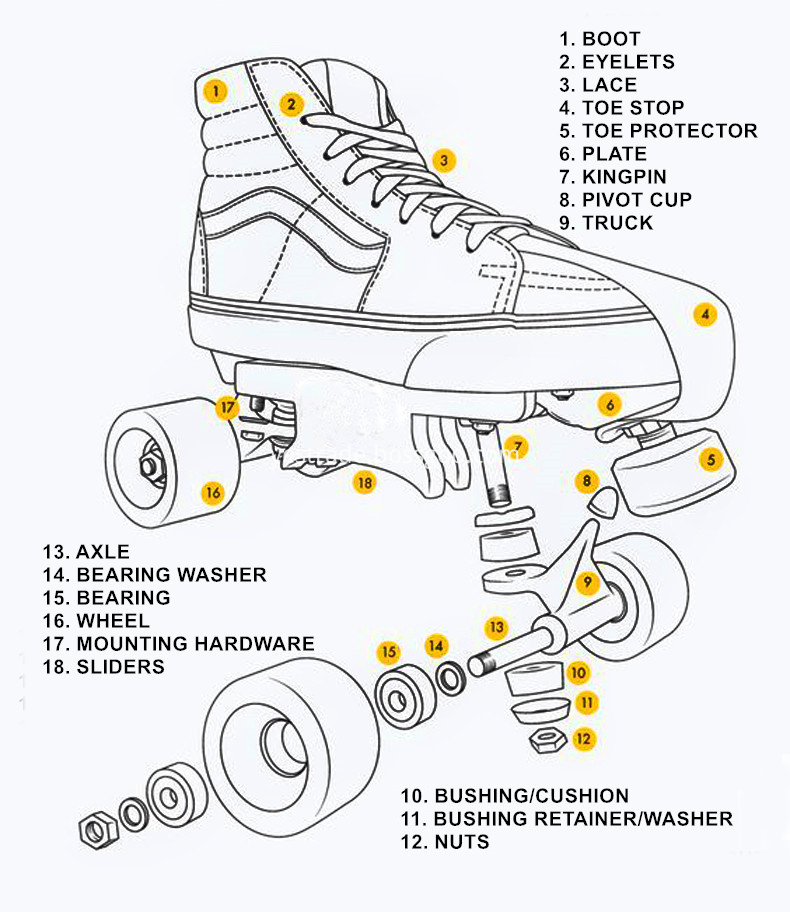
Any good skater would have gone through multiple different set-ups. It can take me a while to get used to a new boot, plate, truck or wheel so be sure to be patient with your adjustment period. We all have individual needs. Your set-ups should be customized to suit the personal style of the skater. Most skaters own more than one pair of skates, plates and trucks and many pairs of wheels, bushings, bearings and other interchangeable parts. It is important to experiment and figure out what works best for you individually.
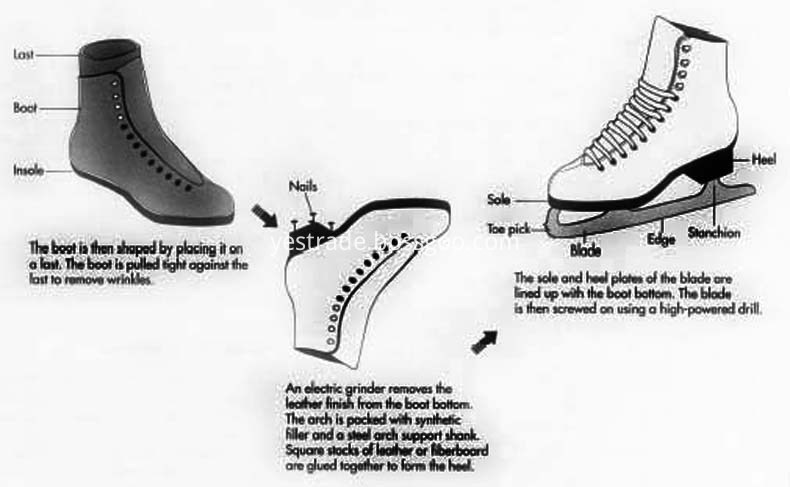
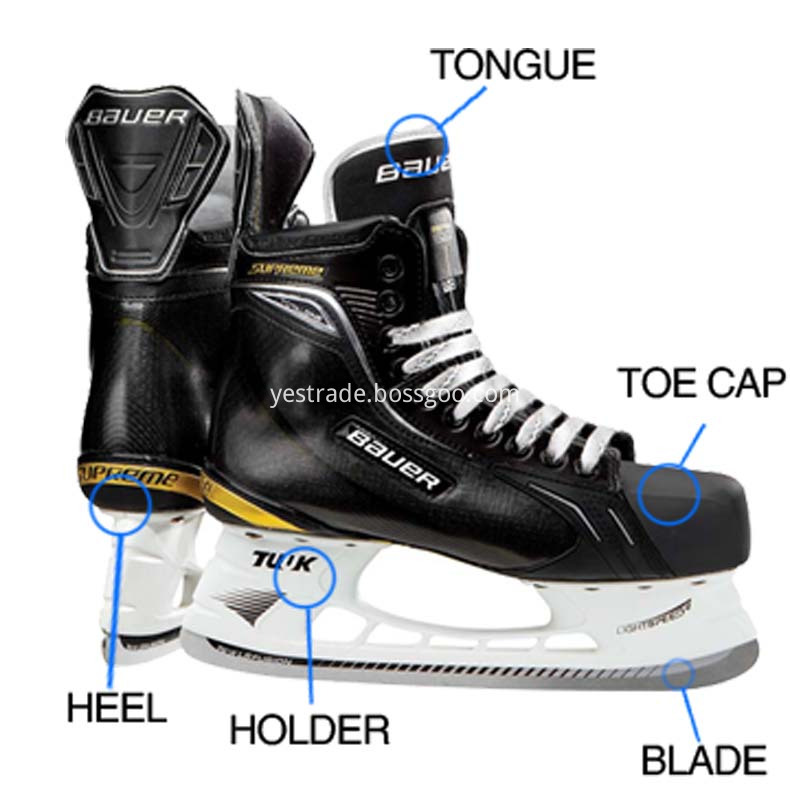
Ice skating is a sport in which people slide over a smooth ice surface on steel-bladed skates. Millions of people skate in those parts of the world where the winters are cold enough. Although most people ice-skate for recreation and exercise, skating for form and speed is a highly competitive international sport. Ice-skating skills are also an important part of the game of ice hockey. Ice-skating shows, such as the Ice Follies and the Ice Capades, have entertained millions of spectators. These shows also provide a means for skaters to exploit their talents commercially. The increasing number of indoor rinks has made year-round ice skating possible.
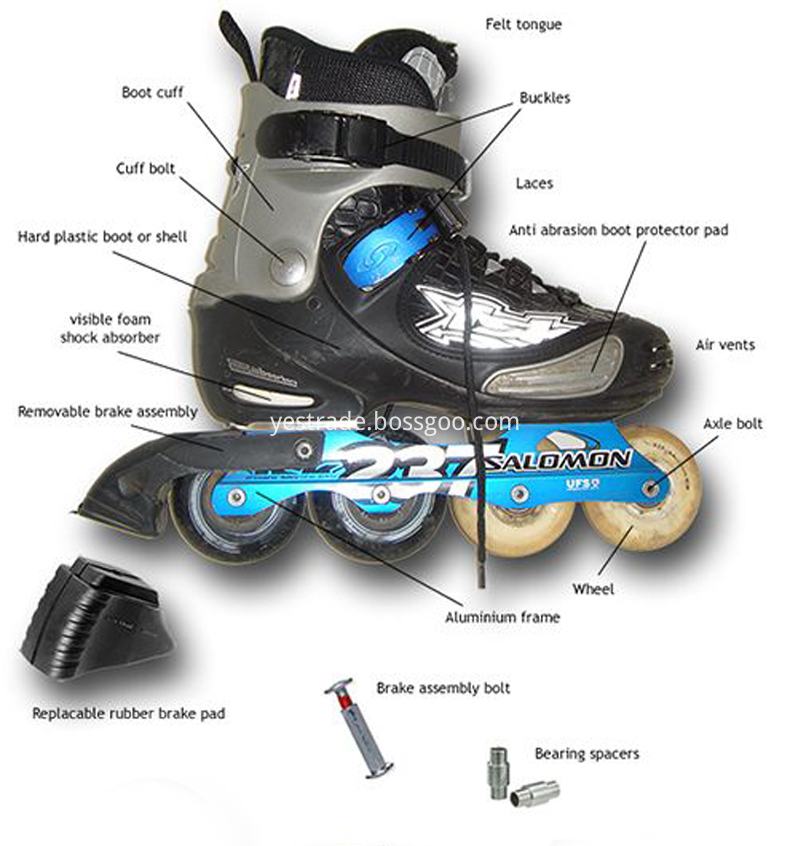
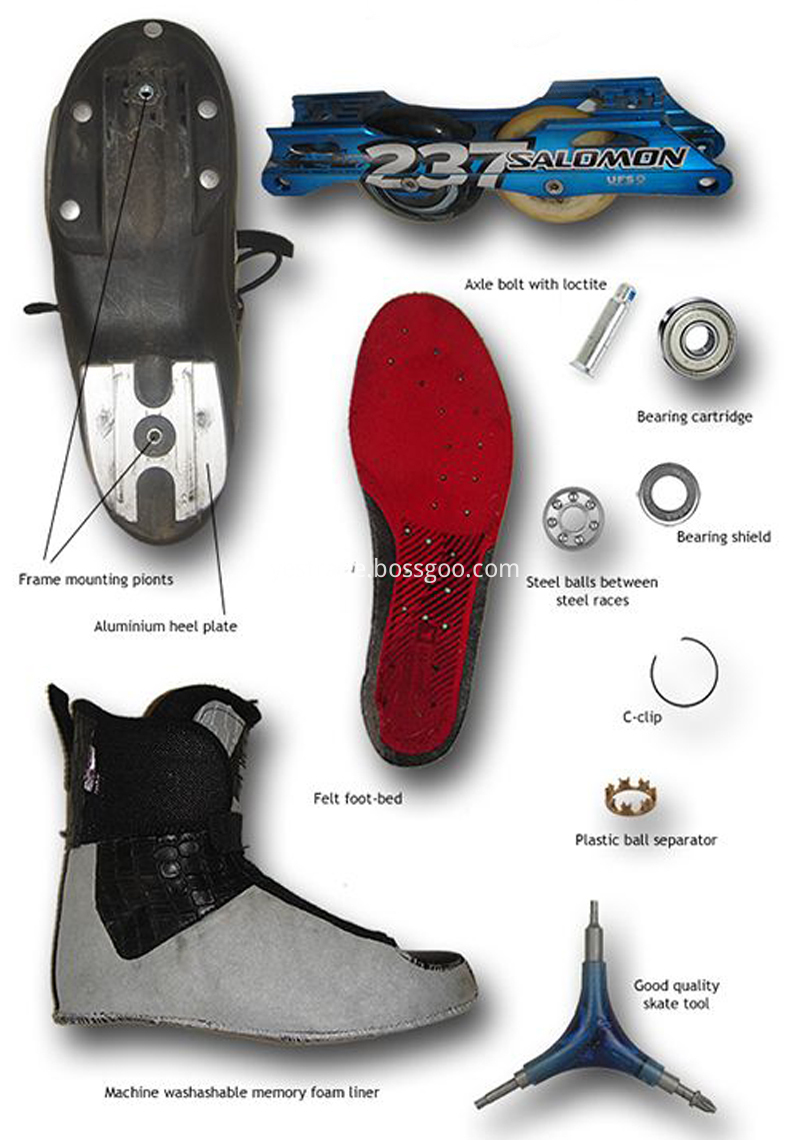
Inline Speed Skates come with 3 or 4 wheels. The shoes are close-fitting and have little padding. Most call this sport Inline Racing. Many people who are inline racing switch back and forth between this and ice speedskating. My guess is that the shoes and frames for ice speed skating and inline racing are built similarly, making it an easy transition.
Skating shoes styles are roller skates shoes, inline skates shoes and ice skates shoes for kids, men and women.
Skating Shoes
Skating Shoe,Roller Skate,Ice Skate,Inline Skate
YONGKANG YISHANG INDUSTRY&TRADE CO.,LTD. , http://www.yes-trade.com